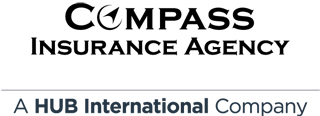Employer’s Liability Insurance (EL) provides coverage to the employer for any work-related bodily injury or disease aside from the liability that is already imposed on the employers by the worker’s compensation law. These have to prove that employer negligence occurred to cause the injury.
Proof of Negligence Requires Four Basic Elements
1. The employer had a legal duty to protect the employee from any undue harm or injury
- This is done through keeping up maintenance on machines and reducing risks or hazards (supply of goggles, gloves, masks, etc.)
2. Employer’s actions or omissions violated that duty
3. An employee was injured as a direct result of his employer’s violation of duty
- The employer did not follow through on a complaint or didn’t take appropriate actions to correct the complaint that was filed and the employee ended up emotionally, mentally or physically hurt due to that violation of duty.
4. An employee suffered tangible damages (medical bills, lost wages, pain and suffering and the like) resulting from the injury
Types of Claims Covered by Employer’s Liability Insurance
Four Major Types of Claims That Are Covered Include
1. Third Party over Actions. This is a lawsuit that is filed by a third party who is seeking indemnity because it was held liable for an employee injury.
- For example, an employee who was injured using a piece of machinery that the employer had not maintained properly. The employee sues the manufacturer of the equipment which results in the manufacturer suing the employer for contributory negligence as a result of poor maintenance of the equipment.
2. Loss of Consortium. This is a lawsuit filed by an injured employee’s spouse for loss of the services of the spouse that was injured.
3. Dual Capacity Suits. These are brought on by an injured employee, against the employer, when the injury arises from a product the employer manufactures.
- Employers are liable as both the employer and the manufacturer.
4. Consequential Bodily Injury. These lawsuits are filed by a family member for injuries that are caused by that family member as a consequence of the employee’s injury.
- This is if a spouse or other family member were to obtain an injury (sprained back, broken leg, etc.) from taking care of the family member who was injured originally. This can also be from overcompensation (working two jobs) to make up for any financial deficits.
Employers Liability does have a cap limits of approximately $1 million dollars for each of the coverage options.
Workers Compensation
Worker’s Compensation is a publicly-sponsored system that pays benefits to workers who become injured or disabled during the course of their employment. A few examples of work-related injuries would be if a back injury occurs while loading boxes for shipping, a development of carpal tunnel syndrome while typing for long periods of time, or becoming ill due to hazardous chemicals as a work site. Work-related injuries are anything that is done to a worker that directly correlates with the job requirements. These laws are also a compensation bargain to protect both the employer and the worker.
Worker Compensation Insurance policies offer coverage of medical and recovery fees, sick pay while on medical leave, replacement wages when the employee is unable to work because of the covered injury or illness, dependent support and funeral expenses if a fatal injury occurs that is a direct relation to the worker’s job. These are not the same as unemployment or disability insurance.
Claims that are not filed immediately after obtaining an injury or developing an illness that is work-related can potentially allow for an insurance company to deny benefits. This denial could result in a legal situation for both the employee and employer if there is no union at the company. Union representation results in a different negotiation process which can be settled between the employer and the union.
Does an Employer Need Both Insurance Policies?
These two policies are part of each other. When purchasing worker’s compensation, a company is also purchasing the employer’s liability. The first part of worker’s compensation fulfills statutory obligations that are covered under the compensation laws of the state. The second part of the policy is an employer’s liability.
In the state of Michigan, if an employer purchased worker’s compensation insurance through the state’s fund, the policy may not include employer’s liability insurance. If this is the case, the employer can purchase a Stop-Gap Insurance. This insurance can fill the gap in a company’s insurance coverage for work-injury lawsuits. These are typically attached to the general liability policy instead of the worker’s compensation policy.
Looking for Assistance in Covering Your Business?
At Compass Insurance Agency, our agents work with about 20 insurance companies to answer any of your questions regarding your insurance needs for your business, you and your employees. Just click the link below or call or more liability insurance and workers comp information.





